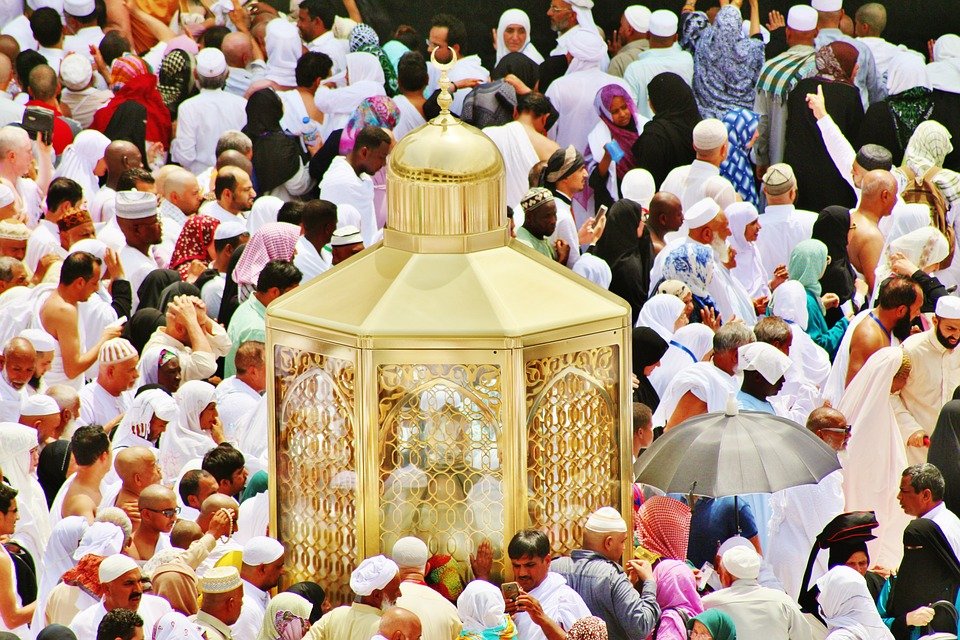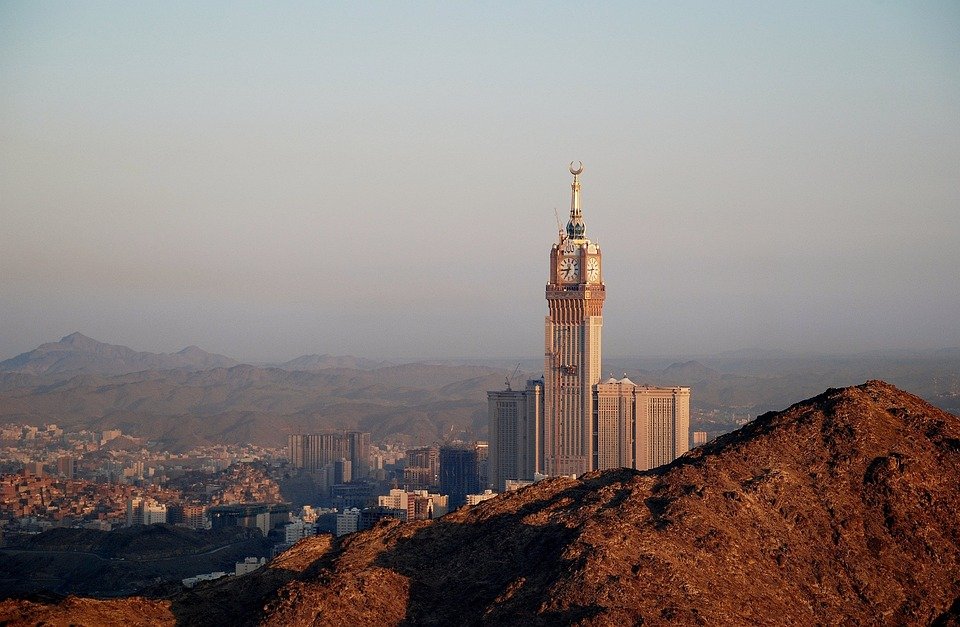You are here to read: When Is Eid After Hajj? Key Dates and Celebration Insights – A Thoughtfully Written Guide Offering Spiritual Wisdom and Travel Advice for Every Pilgrim who is going on holy journey of Hajj or Umrah.
When is Eid after Hajj? This question often arises during the significant Islamic season that revolves around the Hajj pilgrimage. In this article, I promise to provide you with a clear and thorough guide on “When is Eid After Hajj?” so that you can plan your celebrations effectively. Understanding the timing of this important festival enhances our connection to its spiritual essence and helps us engage fully in the festivities that follow Hajj.
I believe it’s crucial to recognize the importance and significance of knowing when Eid occurs after Hajj. This festival marks the end of Hajj, symbolizing renewal, sacrifice, and community spirit. With over nine years of experience in Umrah and Makkah travel through our website, Airlinkhajjandumrah.com, I am confident we can offer you valuable insights and key dates for this celebration. Together, let’s explore the rich traditions surrounding “When is Eid After Hajj? Key Dates and Celebration Insights” so we can better appreciate this beautiful occasion.
Understanding the Timing of Eid After Hajj
Eid is a time of joy and celebration for Muslims around the world. It comes right after Hajj, which is one of the five pillars of Islam. Hajj occurs annually in the Islamic month of Dhu al-Hijjah. The exact date of Eid al-Adha depends on the sighting of the moon, making it a unique celebration every year. I find it fascinating how so many people tune in to watch for the moon, as it signifies a moment of unity within the Muslim community.
Eid al-Adha itself is often called the “Festival of Sacrifice.” This day commemorates the willingness of Prophet Ibrahim to sacrifice his son as an act of obedience to God. On this day, families participate in prayers, share hearty meals, and exchange gifts. The exact timing varies, but it generally falls on the 10th of Dhu al-Hijjah. When we think about it, this gathering of friends and family can create lasting memories that remind us of our faith and bonds.
The Significance of the moon sighting
Moon sighting holds deep significance in Islam as it helps determine the beginning of each lunar month. The process involves local communities looking for the crescent moon. If it’s sighted, that marks the start of the new month. With Ramadan and Eid, the sighting becomes even more important because it connects us to traditions dating back centuries. I feel that this age-old practice enriches our spiritual experience as a community.
Why do we rely on the moon? In my opinion, it’s about more than just tracking dates. It represents God’s creation all around us and gives us a deeper appreciation for the natural world. Some countries might declare Eid on different days based on their moon sightings, leading to a variety of celebrations across the globe. This adds a sense of excitement, as each family can celebrate in their special way!
What Happens On Eid al-Adha?
On Eid al-Adha, Muslims gather in mosques to join special prayers. These prayers often take place in large open areas where everyone can come together. The sense of unity is palpable, making it a popular day for families and friends to meet. I’ve always found this communal prayer uplifting, as it brings so many people together in one spirit. The atmosphere feels vibrant with happiness and gratitude.
You're at the middle of this awesome post at AirlinkHajjandUmrah.com through: When Is Eid After Hajj? Key Dates and Celebration Insights. Keep reading, it gets better!
After prayers, families participate in the ritual sacrifice known as Qurbani. This act symbolizes sharing and compassion, as the meat is usually distributed among family, friends, and those in need. Sharing food not only nourishes the body but also nourishes the soul, in my opinion. It strengthens bonds and builds a sense of community. Remember, the spirit of Eid is all about giving and sharing joy!
Cultural Traditions Around the World
Different cultures bring unique customs to Eid, making it an even richer celebration. In some countries, people dress in their finest clothes and visit one another’s homes. This tradition helps strengthen relationships and promotes a sense of belonging. I find it interesting how food varies by region. Some families might cook biryani, while others might prepare delicious sweets to share. These culinary delights often hold sentimental value, as recipes are passed down through generations.
Gift-giving also plays a crucial role. Children especially look forward to receiving Eidi, which are gifts or money from elders. Watching their eyes light up with excitement reminds us of the joy that comes from giving. In my experience, no matter where you celebrate Eid, the heart of the occasion remains the same: gratitude, love, and community.
How You Can Get Involved
If you want to participate in the festivities, consider attending local events showcasing Eid celebrations. In various communities, you might find gatherings open to the public. These events often feature delicious food, fun activities, and learning opportunities about Islamic traditions. I think joining such celebrations can be eye-opening and help bridge gaps between different cultures.
You can also support charitable organizations that focus on helping those in need during Eid. Many families struggle to put food on the table, and your contribution can help ease their burden. Giving also adds to the festive spirit, reminding us that sharing is as important as celebrating. In my view, participating in both local events and charitable acts can enrich your Eid experience significantly.
Planning for Eid: Tips and Suggestions
As Eid approaches, planning can enhance the experience for everyone involved. Start by preparing your home and inviting friends or family over. Setting up a festive atmosphere with decorations can elevate the excitement. In my opinion, a cozy environment helps bring people closer together. Make a list of dishes you’d like to serve, keeping in mind dietary preferences. This could be an excellent opportunity to honor diverse tastes!
Also, think about activities that can engage your guests. You could plan fun games for kids or set up a story-sharing session with adults. Even small personal touches, like handwritten invitations, can make a big difference. By creating an inviting setting filled with warmth and love, you’re making the celebration memorable for all.
Reflecting on the Meaning of Eid
Eid isn’t just a day of fun and food; it’s a time to reflect on deeper values. Gratitude, compassion, and unity play vital roles in the essence of the celebration. As we enjoy the festivities, it’s important to take a moment and appreciate what we have, both materially and spiritually. I believe that recognizing these values can deepen your faith and connections with those around you.
As you spend time with family and friends, share stories of kindness and compassion you’ve witnessed or experienced. Encouraging open conversations can create an atmosphere of support and understanding. In my opinion, this practice of reflection enriches the celebratory spirit of Eid, making it not only a moment of joy but also a time for personal growth and connection.
That wraps up When Is Eid After Hajj? Key Dates and Celebration Insights. Thanks for sticking with us till here! Share this: When Is Eid After Hajj? Key Dates and Celebration Insights with your friends.
Check our homepage at Air Link Hajj & Umrah for more awesome updates.
Some interesting posts are: 1: Umrah Mubarak, 2: When is Umrah closed 2026?, 3: When does Umrah start after Hajj 2026?
Mushu, an experienced Saudi Arabia traveler and writer, shares insightful tips and spiritual reflections to enhance Hajj and Umrah journeys for fellow pilgrims. He has been to Makkah and Madina from 2016 to 2023 many times and his posts will reflect this.






